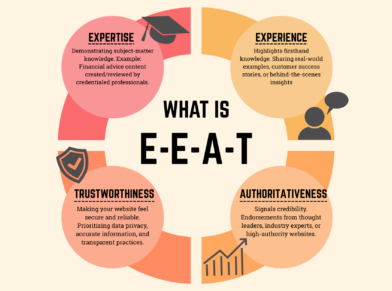SEARCH MARKETING STUDY: HOW NEW GTLDS ARE BEATING .COM
SEARCH MARKETING STUDY: HOW NEW GTLDS ARE BEATING .COM
Since May 2014, Globe Runner has been actively researching and studying the Search Engine Marketing (PPC) effects that the New gTLD domain name extensions are having on the industry. The results of our first initial deep dive into real-world data was released back in September 2014. We then provided an update 8 months later. Originally, the .COM beat out a new gTLD domain name when it came to quality traffic: but .COM traffic was more expensive. However, one year and four months later, the tide has changed.
New gTLDs convert much higher than .COM. Conversions on .COM continue to deteriorate.
Back in May 2014, we found that domains of new extensions were converting at about 34 percent, and .COMs were converting at about 52 percent. It cost more to advertise using a .COM than a new domain extension. However, over a year and a half later, that has all changed. New domain extensions are converting at about the same rate–but .COM domains are converting now at a record low, of nearly 20 percent. It still costs more to advertise using a .COM domain name than using a new domain extension. Here are some quick stats from our updated research:
Results: Average CPC
3Carat.Diamonds: $.77 Sept. 2015 vs $.69 in Jan 2015 vs. $.77 in May 2014
3CaratDiamonds.com: $.83 Sept 2015 vs $.82 (vs. $.81 in May 2014)
Conclusions:
23% Conversion Rate on .COM, 35% on .Diamonds in September 2015.
Previously, January 2015: 31.76% Conversion Rate on .COM, 29.11% on .Diamonds
Previously, May 2014: 52% Conversion Rate on .COM, 36% on .Diamonds
New gTLDs convert much higher than .COM. Conversions on .COM continue to deteriorate.
According to our re-running of the testing during January 2015, the conversion rate of the .COM was very close to what the conversion rate on the .diamonds was–only a 2 percent difference between the two. Back in May 2014 the .COM converted a lot better. But that wasn’t the case in January 2015. The New gTLD domain name was converting the same as a comparable .COM domain name.
In September 2015, however, the conversion rate of the .COM has continued to go down. It’s now at an all-time low. Yet the conversion rate on the .Diamonds domain name has remained about the same (it’s actually up 2 percent over May 2014’s data).
Our overall goal when setting up these tests was ultimately to determine whether using a .Com domain name or a new gTLD domain name is better when it comes to search engine marketing and Google AdWords. Back in January 2015 we were not totally convinced that one is necessarily “better” than the other. However, our view of this, after over a year and a half of looking at the data and running test, we have changed our tune.
Ultimately, if we had to decide whether to use a New gTLD domain name extension or a .COM domain name for our Google AdWords campaigns, we would choose to use a New gTLD domain. The prices for clicks (CPC) haven’t changed much over time. They remain fairly consistent. However, it appears that the overall relevance for the .Diamonds TLD has gotten better: we’re seeing a better Average Position than what we did back in May 2014: an 18 percent increase! This could be because Google has ‘tweaked’ something in the back-end that makes .Diamonds domains more relevant because the keyword is in the domain name extension, but we can only speculate.
Globe Runner’s goal is to be totally transparent with the results our Search Engine Marketing research, so we have included all of the data, as well as our detailed analysis, in a white paper. Use the form below to download the latest results of our testing.
A FREE, CUSTOMIZABLE CONTENT CALENDAR FOR 2016
When multiple clients have multiple content needs, it can get hairy keeping track of everything. At Globe Runner, we developed an annual content calendar on Google Sheets that allows content producers to view the entire year at a glance and plan content as far ahead as possible. And we’re sharing it with you.
How to use this content calendar template:
- If you can open it, then it’s saved onto your Google drive. To save your own copy that you can edit, simply go to File –> Make a copy to have your own. There is no need to request us for access to use the sheet. Repeat: There is no need to request us for access to use the sheet!
- Navigate the months using the tabs at the bottom of the screen.
- US Federal holidays are highlighted in blue. Weekends are highlighted in pink. Just so you don’t mistakenly schedule a blog post for the weekend.
- Key dates for the months are listed in Column C-D. We deliberately added a generous helping of silly days (hello, Barbie Day on March 9), famous birthdays and today-in-history entries for the occasional moment when we run out of clever things to say on social media. You can change these of course to the type of content that makes sense for you.
- This calendar was completed in September 2015. Obviously a lot of things can happen between then and 2016. We encourage you to check other sources in case you’re building campaigns around sports and other special event dates.
Ready to start planning content for 2016? Go.
GLOBE RUNNER IS A PROUD SPONSOR OF THE DOMAIN CONFERENCE
Globe Runner is proud to support the upcoming domain name conference called “The Domain Conference“, taking place in Fort Lauderdale, Florida from September 26 to 29, 2015. Globe Runner will join several stellar conference sponsors, including:
Premier Sponsor
.Club
Show Sponsors
Above.com
Coffee.Club
DCG.com
Escrow.com
ionmag.asia
NameJet
Protected Parking
Domain Sponsor
Ambition Insight
NamesCon
Frakes on a Plane
donuts
Sedo
101Domain.com
Verisign
GoDaddy
The Domain Conference is taking over for the previous T.R.A.F.F.I.C. conferences, which have been held in Fort Lauderdale, Las Vegas, and in New York City. Run by the Neu family – Howard Neu, Barbara Neu, and Ray Neu -the Domain Conference offers Cabana Networking, DomainFest sessions, and some stellar speakers, many of whom I know personally, including:
Morgan Linton
Braden Pollock
Michael Cyger
Ron Jackson
Brett Napoli
John Ferber
Jeff Sass
Chris Sheridan
Adam Dicker
Fred Mercaldo
Mike “Zappy” Zapolin
Monte Cahn
Dan Schindler
Dr. Gregg McNair
Scott Richter
Michael Gilmour
Tessa Holcomb
Jothan Frakes
Alan Ezeir
Daliah Saper
Colin Campbell
Alfredo Pinochet
Solomon Amoako
Luke McCormack
George Verdugo
Andee Hill
Stevan Lieberman
Dave Evanson
Yancy Naughton
Larry Fischer
Sevan Derderian
George Hong
Ilze Kaulins-Plaskacz
Come by the Globe Runner booth while you’re at the Domain Conference in Fort Lauderdale, and we’ll have a few goodies for you. We’ll also have updated research details from our latest .Com vs. New gTLD data.
Mention that you read this post and we’ll give you a free (on the spot) verification of one of your domain names using our new patent-pending service Verified Domains.
We’ll see you in Fort Lauderdale!
PREPARING FOR 2016: DIGITAL STRATEGY IN THE NEW YEAR
It may not seem like it, but 2016 is right around the corner, and with a new year comes a whole new batch of digital considerations.
Traditional advertising continues to morph into the digital realm with social media juggernauts at the reins.
It’ll be important to stay organized in the coming months. With that in mind, here are a few tips to keep your digital strategy fresh in 2016.
Keep it Social
Many of our clients use Pinterest as a tool to stay connected with their customers and share dynamic, creative content. Going into 2016, keeping up to date on Pinterest and other important social media entities means a greater ROI for your brand. Shopping a brand with promoted Pinterest pins can generate hundreds of thousands of views for hundreds of dollars or less.
On more unexplored territory, Instagram has been working with marketing affiliates on a phased rollout of its advertising platform, which should become available to the public by the end of this year. Instagram says its ad recall for sponsored posts is over two times the norm for online advertising.
We have the opportunity to leap into this unprecedented area feet forward and establish innovative ways to increase brand exposure.
New Year, New Rules
What else to keep in mind as we barrel into a new year? Mobile. Data. Ease of Access. Now that you’re tidying up and preparing new budgets, take mobile into account if you haven’t already and consider a mobile-friendly website. If users on mobile devices can access your site, that means more traffic and a boost in your search engine rankings.
We’re seeing mobile develop into a new digital frontier, and sometimes even a battlefield. In late August, T-Mobile CEO John Legere declared open battle against what he calls data “thieves” who swallow thousands of gigabytes of data.
Why is this important? More and more, it’s becoming evident that the way we interact with data online (and now through mobile devices) can have a real world impact on the bottom line of a thriving business.
Clean Up
Okay, it’s been months since spring cleaning. You enjoyed the summer, but now the dust is starting to pile up again and you might be worried about clearing your mental space to tackle 2016. Here’s a couple useful tools to keep data in check:
Infogr.am – Take client reports and mounds of data and turn them into easy to navigate, colorful infographics. You can share these internally to better understand your business or distribute externally to increase brand exposure with something more elegant than hard data.
AdWords enthusiast? Check out Google’s new Report Editor they’ve started to tease on their blog. Google’s new tool will allow you to explore, sort, segment and visualize account data so you can take control of any frazzle over the next few months.
Finally, if you haven’t already, connect with a time tracking service like Everhour to hold yourself accountable and get a better understanding of when and where to allocate resources.
TAG MANAGEMENT 101: MAKE YOUR POSTS SHINE
Finishing your blogpost or article is a feat deserving of a night out or that pumpkin spice latte you’ve been craving. But before you finish, you realize you have to tag the post to high heavens and back; how do you determine which tags to choose and are the tags becoming overwhelming? The simple practice of cleaning and managing your tags can keep you sane and help organize your blog and posts to best maximize your SEO.
What is Tag Management?
Tags are snippets of code that are usually placed in the <head> of a page which enable 3rd-party tracking, analysis, and reporting. Google Analytics and other analytics platforms are an obvious tag, but remarketing, conversion tracking, affiliates, and advanced customer insight services utilize tags as well.
Tag management involves the use of code in the backend of your platform. These codes, or tag managers, allow marketing to have control over their own little space on a web page. The 6 or 7 tags on any given page are replaced by a single container. That container holds code that listens to rules dictated in the tag manager’s backend about when to fire which tags.
Tips on Successful Tag Management
First of all, why even consider taking extra time out of your day to manage tags? For two important reasons: management and data governance. Data governance provides directional focus. No data governance and you have a mess of useless information. Tags provide insight for you and the consumer—the consumer is able to better explore your blog and lead them to believe that you are an industry expert helping them to understand why your product or service is a necessity in their lives. They are also important for your content strategy and digital marketing efforts; tags gain traction on Google as they help readers find the posts with the specific information they’re looking for.
Tags, unlike categories, serve as an index for your site or blog. They can help you understand how your content strategy is changing or needs to be changed. When you pull reports in your search for insights, you want data lined up so it is easier to read and digest and this is where management comes in. We’re not talking about simply managing which tags you use; we’re talking back-end metadata. For example, set a product ID to something that makes sense for anyone who looks at the code (myproductatthiscompany.productID). You can then tailor your analytics code to pull information about that data object and compare it to its content value for a specific piece of content or throughout your whole content library.
Google’s Tag Manager is a free tool for managing marketing and tracking tags on your site. If you need a more in-depth look at your content and digital marketing strategy in addition to something provided to you via a free tool like Google’s Tag Manager, contact Globe Runner today!
CAMPAIGN MANAGEMENT IN 3 SIMPLE STEPS
Executing a successful campaign is as detail-oriented and time-intensive as preparing for battle. Knowing the breakdown of successful campaign management can really take the daunting factor out of the equation so that you aren’t afraid to take the first step.
COURTESY ANDY DOLMAN – WIKIMEDIA COMMONS
With the many analytics tools and software available to us, it can be hard to know where to start. The best way to start is by focusing on one element at a time instead of being overwhelmed by the bigger picture. The three main elements involved in successful campaign management include:
1. Data for campaign management
Start with acquiring a clear understanding of your customer:
- Who are you talking to?
- How can you effectively market to them?
- What are their needs?
- How is your product or service the solution?
Other customer data includes age, gender, ethnicity, family and marital status, employment status and income level. Also, knowing which customers are your most valuable buyers is important because it helps you further focus your efforts.
The more data you acquire, the better because it paints a greater picture of your customers. Use this data to understand their needs and answer the questions that build the basic buying process:
- What do you do?
- So what about what you do? (build awareness)
- Why are you better than…
- Do I need your product/service?
- How do I get your product/service?
- I got it, I’m on it.
To get these answers, you can look at particular marketing communications to understand where potential customers are in the process and take them from one stage to the next until they become your loyal customers.
2. Content
No campaign is complete without implementing content. Now that you know who your customers are, you need to focus on what messaging to send them and how to relay that message to your customer base.
How do content and customers come together? If you know that your customer favors a certain organic product and likes discounts, you can share information in that realm that touts you as the industry thought leader. How about a blog post about when to buy organic to get the best deals? You can also share information about sales during peak season for a certain vegetable or fruit.
3. Execution
You now have an idea of what to send to whom and a better sense of your story. Although your messaging is clear, the next step is to determine how to share it in the most effective way possible. Will a push notification be more effective than a direct mail piece?
Communicating your information through effective storytelling is the way to acquire and retain customers. Reach out the wrong way and you risk turning potential customers away.
Taking the right steps toward successful campaign management means making sure you get each step right before taking the next one. Globe Runner can help you turn your campaign ideas into action by walking you through these steps so you better understand your root customers and messaging. Contact us today!
TOP 10 GEOGRAPHIC NEW GTLD EXTENSIONS
As part of Globe Runner’s efforts to watch the New gTLD extensions in regards to SEO (Search Engine Optimization) and our SEO Power Rankings Index, we looked at the geographic extensions. We wanted to know which of the new domain extensions actually have live websites being developed on them. And of those developed websites, which new geographic extensions have the best websites on them. Here’s our list of the top 10 geographic New gTLD extensions.
1 .nrw
2 .scot
3 .brussels
4 .eus
5 .bzh
6 .bayern
7 .hamburg
8 .nyc
9 .paris
10 .berlin
Honorable mention:
11 .vegas
12 .quebec
13 .ruhr
How We Determined the Rankings
We looked at the top 500 new gTLD extensions based on number of registrations. Then we pulled all of the websites that have been developed on those new extensions and looked at the quality of those websites. Some of the factors we used to determine quality were the number of backlinks, the Trust of those sites, and the Trust Flow/Citation Flow of those sites. Trust Flow and Citation Flow are Majestic.com quality factors.
For our geographic-related extensions, we determined that a new gTLD domain extension was geographic-related because of the extension’s restrictions. For example, .NRW has restrictions:
— Restricted to individuals with residence in the postal code area of the federal state of North Rhine-Westphalia; or
— individuals that have place of business in connection with self-employment or freelance work in the postal code area of the federal state of North Rhine-Westphalia; or
— entities that have place of business in the postal code area of the federal state of North Rhine-Westphalia
A few of these extensions technically don’t have registrant restrictions (i.e., they don’t have to have an address in the region), but they sites being built on those extensions are related to the region, so we made an exception.

The top sites that we’ve identified during our review of the data include:
https://land.nrw/
http://www.gov.scot/
http://be.brussels/
http://www.eitb.eus/
Our favorite website built on a New gTLD Extension? Of course it has to be the Eiffel Tour website: https://www.toureiffel.paris/fr.
**Note: Keep in mind that this list is based on the quality websites built on these extensions. There are other geographic extensions that are popular that have a lot of registrations and websites–but they didn’t show up on this particular list. Highly trusted websites have to be built on an extension in order for it to be considered and thus show up on this list.
THE CONTENT TAKEOVER
How much content is on the web and how has it grown over the years?
In March 1989, the World Wide Web turned 26. What was once a thing of sci-fi, the web has grown from Star Trek fiction to an everyday survival tool during its 26 years of life. As newspapers become scarcer and books slowly move towards electronic versions, the web has quickly become the hub for a variety of content from all around the world. Now it’s more than just what content is on the internet, it’s also about how users are engaging the content and what they are using to get to it. Let’s take a look at how the web and its content have grown over the years by looking at when programs and other milestones that encourage content marketing came to be:
1895 – 1987 Magazines take off starting the industry for published and print advertising.
1995 Personal homepage service, Geocities, launches.
1996 Placeware starts offering web conferencing services.
1999 Blogger launches.
2001 $20 billion. The amount spent on custom content.
2003 MySpace launches. As does LinkedIn.
2004 a blog is born. Microsoft launches Channel 9, the first ever corporate blog from a big wig company.
- Also, Facebook is launched.
2006 Twitter is born.
2009 Revised FTC endorsements and testimonials guidelines go into effect impacting endorsers and bloggers.
2010 Content Marketing Institute is born.
- 25% of marketing budgets spent on content marketing.
- 88% of all brands use content marketing
2011 Importance of content is starting to take lead. Chief Content Officer Magazine launches in print and digital.
2013 33% of total budget spent by B2B marketers on content marketing initiatives.
- The most popular content marketing tactics include social media, articles, enewsletters and blogs.
2015 70% of B2B marketers are creating more content than they did one year ago, even those who say they are least effective (58%) and those without any type of strategy (56%). (Content Marketing Institute)
We’ve quickly shifted from worrying about prices and promotions to creating a true connection with consumers through content. If marketing used to be about the 4Ps (Product, Place, Price, Promotion) Socialnomics author Erik Qualman claims it’s increasingly about the 4Cs (Creating, Curating, Connecting and Culture).
As content continues to grow, evolve and take over the web, three things are certain. With content you should:
- Always provide value. It’s about building lasting relationships with brand ambassadors excited to spread the word about your product or service.
- It won’t be read because it exists. Use the content to find your audience by making targeted distribution a key component to your overall content marketing strategy—approach owned media, paid media and earned media channels for a strong three-pronged approach.
- Set specific goals. Set clear objectives and measure your success metrics so you can track, measure and optimize against branding campaigns. Instead of being a jack of all trades, create a niche for your brand and lead the way.
How has your practice evolved alongside content and it’s growth over the years?
TOP 20 BEST NEW GTLDS BASED ON QUALITY
As a part of Globe Runner’s New gTLD SEO Power Rankings Index, we gathered data from over 20,000 websites that have been actually built–or developed, on New gTLD domain names. From that list of over 20,000 websites, we have studied these websites’ qualities, and pulled a lot of other interested data. We were able to find the best New gTLDs based on quality.
Sure, there have been a lot of New gTLD domain names registered, but just because a domain name is registered doesn’t mean that an actual website has been built on that domain name. Globe Runner took the time to come up with an extensive list of fully developed websites–most of which are indexed in the search engines, and some actually ranking well in the search results.
One of the data points that we analyzed was related to the quality of the websites built on the New gTLD domain names. What we wanted to know is which New gTLDs have been more successful in attracting quality websites to be built on their TLD.
Based on quality–mainly the Majestic.com Trust Flow factor. Here is our list of the top 20 New gTLDs with the best domain names, based on Trust Flow.
Top 20 TLDs with Best Domains Based on Trust Flow
.nrw
.scot
.brussels
.eus
.bzh
.agency
.wiki
.foundation
.tips
.today
.bayern
.hamburg
.nyc
.digital
.farm
.domains
.london
.marketing
.beer
.guru
Trust Flow is defined by Majestic.com in this way:
Trust Flow, a trademark of Majestic, is a score based on quality, on a scale between 0-100. Majestic collated many trusted seed sites based on a manual review of the web. This process forms the foundation of Majestic Trust Flow. Sites closely linked to a trusted seed site can see higher scores, whereas sites that may have some questionable links would see a much lower score.
Globe Runner considers Trust Flow to be a very important factor when gauging the overall quality of a website, as the most trusted websites have a higher Trust Flow value.
Globe Runner also looked at the actual websites with the highest Trust Flow values assigned to them from Majestic. The following is a sample of the best New gTLD domain names that we found based on Trust Flow:
URL Trust Flow
https://land.nrw/ 71
http://www.gov.scot/ 69
http://be.brussels/ 69
http://www.eitb.eus/ 67
http://www.bretagne.bzh/ 67
http://yanntiersen.bzh/ 66
http://www.leefmilieu.brussels/ 65
http://rabbithole.agency/ 62
http://www.berria.eus/ 61
http://kodi.wiki/ 61
http://lgbt.foundation/ 61
http://www.argia.eus/ 60
http://thehub.tips/ 60
http://www.flowercarpet.brussels/ 60
http://www.kreuzfahrten24.today/ 59
http://cirb.brussels/ 59
http://www.gruenderland.bayern/ 58
https://www.medianet.hamburg/ 57
http://www.pik.bzh/ 56
http://gaycitynews.nyc/ 56











